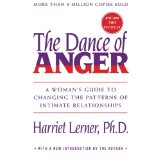 Anger, like all our emotions, has a purpose. It helps us survive and motivates us to take action and make important changes. It protects us when life threatens us psychologically or physically.
Anger, like all our emotions, has a purpose. It helps us survive and motivates us to take action and make important changes. It protects us when life threatens us psychologically or physically.
Left unchecked, however, it becomes toxic and explosive. When we react without restraint to its powerful surge of energy, we not only inflict pain on others but ourselves. It is up to each of us to examine the reasons associated with our anger, discover the underlying issues that perpetuate it on an ongoing basis and set up a plan to become responsible for our behaviors when angry.
Over my career as a teacher and therapist, I have acquired and read many books written by psychology professionals who have taken major issues, clarified their underlying causes and provided strategies for constructive and positive solutions. I share three books that I feel touched on the core of anger, why we get caught up in its passion often to the detriment of its outcome.
 “The Dance of Anger,” is a woman’s guide to changing the patterns of intimate relationships written by Harriet Lerner, Ph.D. Although written many years ago, it is timeless in its understanding of a major problem we all face. Dr. Lerner describes patterns of behavior, the emotion of anger and ways to identify, understand and resolve problems surrounding an ongoing anger problem. She especially writes to those areas where contention and anger often arise in our lives: marriage, families of origin, mother and daughter.
“The Dance of Anger,” is a woman’s guide to changing the patterns of intimate relationships written by Harriet Lerner, Ph.D. Although written many years ago, it is timeless in its understanding of a major problem we all face. Dr. Lerner describes patterns of behavior, the emotion of anger and ways to identify, understand and resolve problems surrounding an ongoing anger problem. She especially writes to those areas where contention and anger often arise in our lives: marriage, families of origin, mother and daughter.
 “Beyond Anger, A guide for Men” is its counterpart written by Thomas J. Harbin, Ph.D. that speaks to a problem many men face today. While women often stuff their anger, become passive-aggressive or use it to manipulate, men’s anger often turns into a rage that when triggered seems to have no bounds. Part one of the book describes how anger can become a central problem in men’s lives. Part two has action plans to deal with unwanted anger.
“Beyond Anger, A guide for Men” is its counterpart written by Thomas J. Harbin, Ph.D. that speaks to a problem many men face today. While women often stuff their anger, become passive-aggressive or use it to manipulate, men’s anger often turns into a rage that when triggered seems to have no bounds. Part one of the book describes how anger can become a central problem in men’s lives. Part two has action plans to deal with unwanted anger.
 “Anger: Deal with it, Heal with it, Stop it from Killing You” by Bill DeFoore, Ph.D.speaks to both therapy and self-help. There is much we can do on our own by reading and becoming familiar with problems we may have. But there are times when we need a licensed therapist to help sort out the knots and tangles of our lives. Problems can be hard to identify at times and harder to resolve on our own. A good place to start is becoming familiar with what you recognize as a problem.
“Anger: Deal with it, Heal with it, Stop it from Killing You” by Bill DeFoore, Ph.D.speaks to both therapy and self-help. There is much we can do on our own by reading and becoming familiar with problems we may have. But there are times when we need a licensed therapist to help sort out the knots and tangles of our lives. Problems can be hard to identify at times and harder to resolve on our own. A good place to start is becoming familiar with what you recognize as a problem.
Whether you struggle with your own quick angry reaction to events or personally know someone who continues to flash anger in your face, this book gives valuable information on the overall subject of anger. All of us will come in contact with excessive anger at some time. How do you deal with it? How do you respond to it?
Bill DeFoore’s book is easy to read and gives a good description of many aspects associated with anger, such as:
- it is used as a protective shield
- it won’t remain buried
- Breaking free from passivity
- anger that has turned into rage
- Protecting our inner child
- The role of anger
- Some faces of anger: the raging bull or the wild man
But even more important than its descriptive tenets, De Foore offers healthy ways to release our anger.
Anger out of control is a problem. Anger that is buried eventually explodes. Anger can become a habit and also addictive. Anger used appropriately helps us right wrongs, set necessary boundaries in place to live life honestly and responsibly.
Marlene Anderson
If you enjoyed this blog post, share with your friends.
Sign up today to receive the entire series: http://eepurl.com/baaiQ1
To Receive a Free Consultation for putting together a Personal Plan of Action for yourself, fill out the contact form beside this blog or send me an e-mail. I am also available for speaking engagements, retreats or teaching workshops for your church, clubs or women’s groups on a variety of topics that affect our lives.

